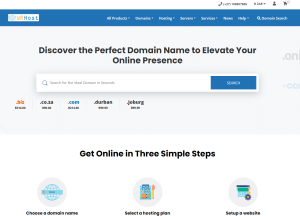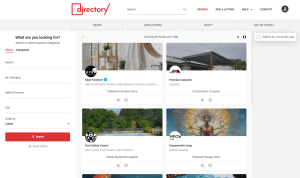There are hundreds of different website design trends and techniques out there, but the best ones will always come back to a few basics. Find out in this article how to build a site that suits your business with clear navigation, an engaging page design and a layout that looks good on any device!
What is a Website?
A website is a collection of electronic files that are stored on a computer server and served up to visitors who request them. The files are typically HTML, CSS, and JavaScript files, but can also include other types of files such as images, videos, and PDFs.
Websites are accessed via a URL (uniform resource locator), which is the website’s address on the internet. When you type a URL into your web browser’s address bar, the browser sends a request to the server where the website is hosted, and then retrieves and displays the requested files.
Most websites are designed to be viewed in a web browser like Google Chrome, Mozilla Firefox, or Microsoft Edge. However, some websites can also be viewed in mobile apps or via dedicated desktop applications.
Websites for Small Businesses
- Make sure your website is mobile-friendly.
- Keep your content fresh and up-to-date.
- Use social media to drive traffic to your website.
- Use calls-to-action to encourage visitors to take action on your website.
- Make it easy for visitors to contact you through your website.
Choosing a Theme for Your Website
There are a few things to consider when choosing a theme for your website. The first is the overall look and feel of the site. You want to choose a theme that is consistent with the branding of your business. The second is functionality. You want to make sure the theme you choose includes all the features and functionality you need for your website. Lastly, you want to consider the cost of the theme. Some themes are free, while others can be quite expensive.
When it comes to choosing a theme for your website, it’s important to consider all three of these factors: look and feel, functionality, and cost. By taking all three into account, you’ll be able to choose a theme that’s right for your business and your budget.
Content for Your Website
If you’re a small business owner, you know that having a website is essential to driving customers to your business. But what do you need to include on your website to make it effective? Here are some tips:
- Include Your Keywords
Make sure your website includes your target keywords. This will help customers find your site when they search for businesses like yours.
- Use Attractive visuals
Use high-quality images and videos on your website. People are more likely to stay on your site and take action if it looks good.
- Write Compelling Content
Your website’s content should be well-written and persuasive. It should convince visitors that they need what you’re selling.
- Include a Call to Action
Tell visitors what you want them to do next. Include a call to action on every page of your site, such as “Buy Now,” “Sign Up,” or “Contact Us.”
- Make It Mobile-Friendly
More people than ever are using their smartphones to browse the web. Make sure your site is designed for mobile devices so people can view it no matter where they are.
Contact Information
If you’re looking to get your small business online, one of the first things you’ll need is a website. But where do you start?
Here are some tips:
- Keep it simple. Your website doesn’t need to be fancy or have tons of bells and whistles. A simple, straightforward website is often the best way to go.
- Make sure your contact information is easy to find. Include your email address, phone number, and physical address on every page of your website. That way, potential customers can easily get in touch with you.
- Use engaging visuals. People are visual creatures, so make sure your website includes plenty of images and videos. This will help keep people interested in what you have to say.
- Write compelling content. The words on your website should be interesting and informative. Otherwise, why would anyone want to stick around?
- Promote your site. Once your website is live, make sure people know about it! Use social media, email marketing, and other techniques to get the word out there.
Comments and Feedback, Test Your Website Page Speed
As a small business, you know that every second counts. That’s why it’s important to test your website page speed and make sure your site is loading as quickly as possible.
There are a few different ways to test your website speed. One way is to use Google’s PageSpeed Insights tool. This tool will give you a detailed report on how your website is performing and where there are opportunities for improvement.
Another way to test your website speed is to use Pingdom’s Website Speed Test tool. This tool will show you how your website loads on both desktop and mobile devices. It will also give you insights into what might be causing your site to load slowly.
Once you’ve tested your website speed, it’s important to take the time to read through the comments and feedback that you receive. This feedback can help you identify areas where you can make changes to improve your website’s performance.







